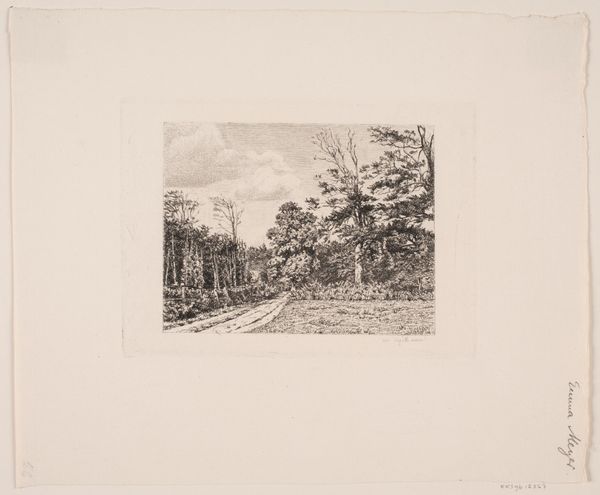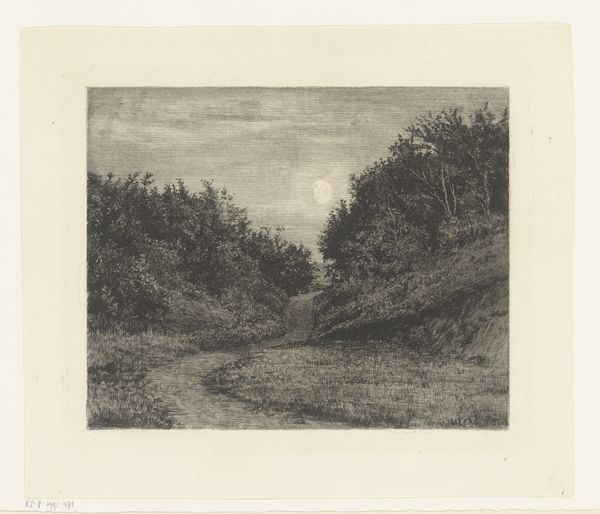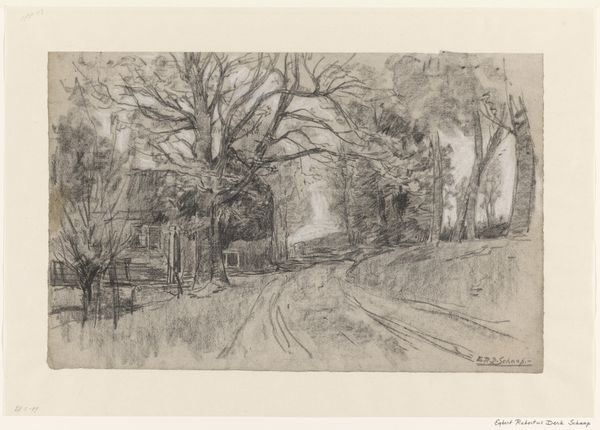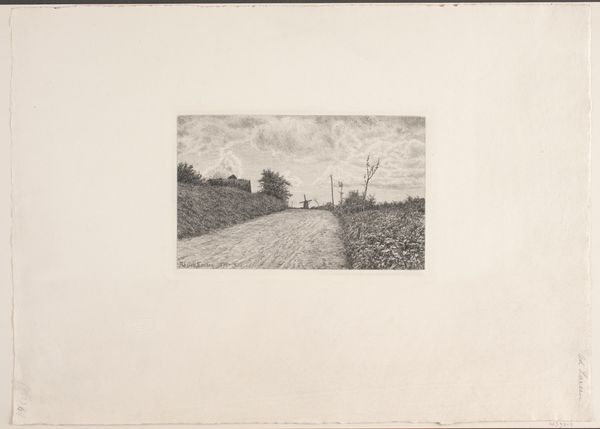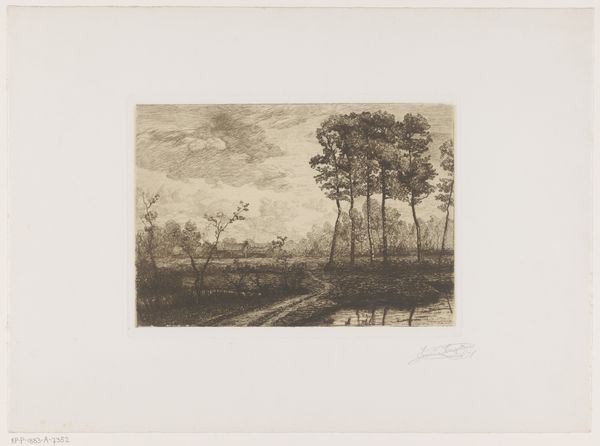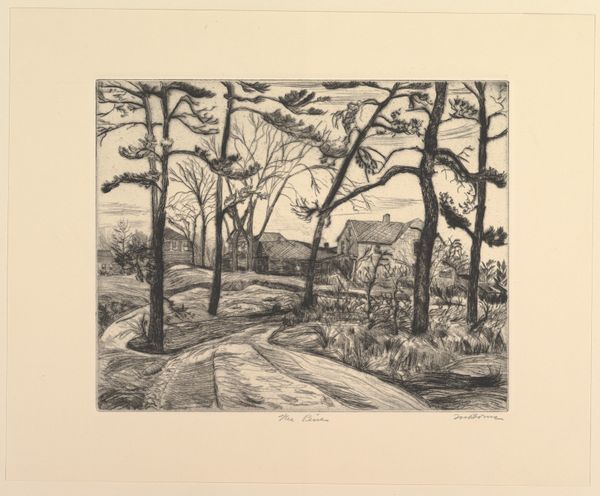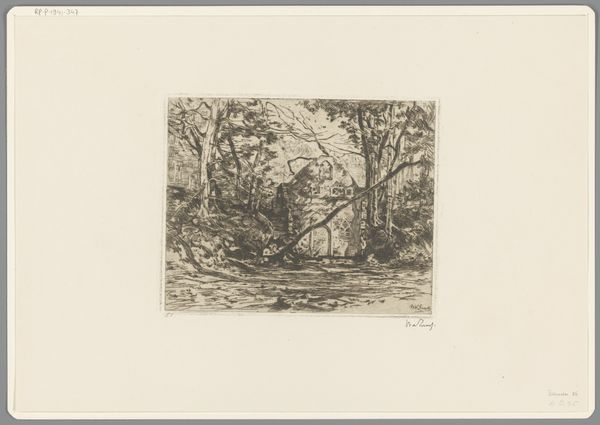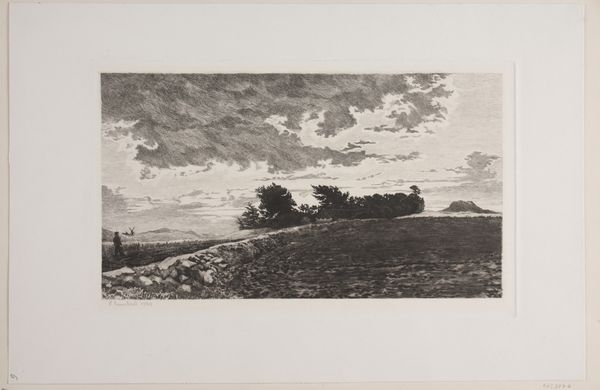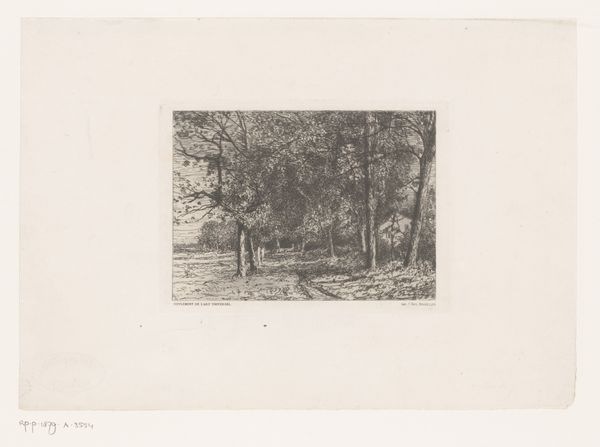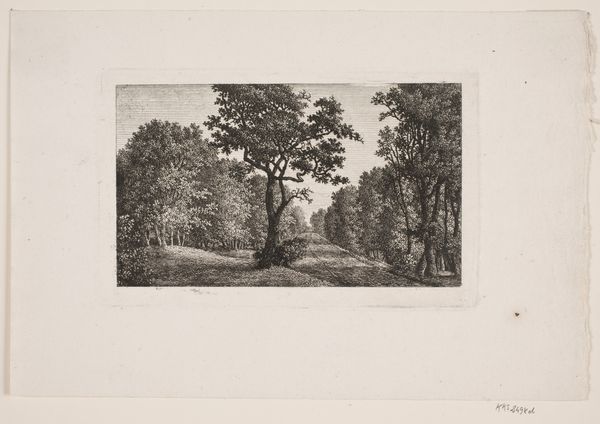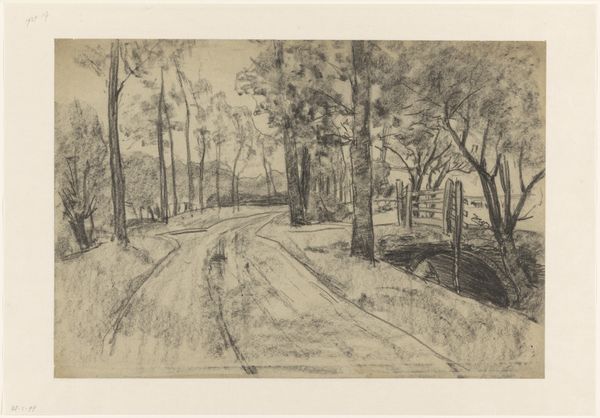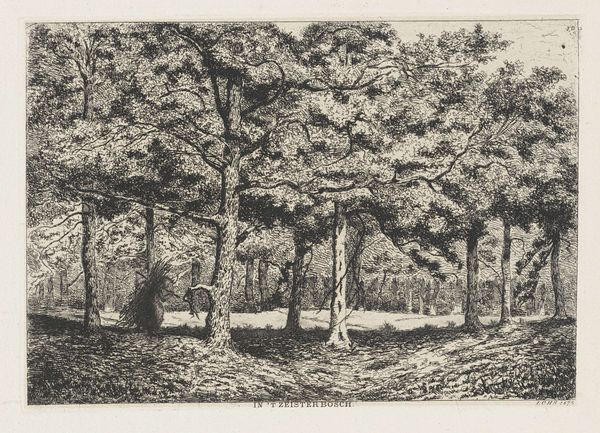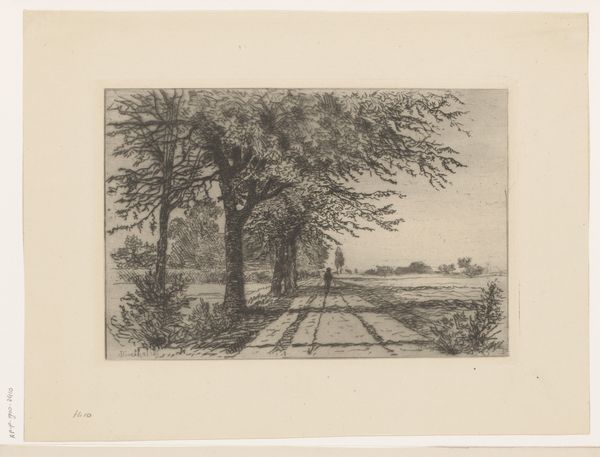
print, etching
# print
#
etching
#
landscape
#
etching
#
realism
Dimensions: 121 mm (height) x 166 mm (width) (plademaal)
Editor: Here we have Emma Meyer's "Skovparti," an etching from 1884, housed at the SMK. It’s a classic landscape scene, but there's something almost…melancholy about the light. What do you make of it? Curator: It’s fascinating to consider this piece in the context of late 19th-century Denmark. Realism was gaining traction, moving away from romantic idealizations of nature. How might Meyer's portrayal of the woods reflect the changing societal views of the natural world at that time, perhaps in contrast to urbanization? Editor: That’s interesting! So, instead of just seeing pretty trees, we should think about what the trees *meant* at a time when cities were growing. Do you think the medium, the etching, played a part in shaping that meaning? Curator: Absolutely. Etching, with its capacity for detailed line work, allowed for a sense of precision and observation, fitting the Realist agenda. Consider how prints were also more accessible and distributed widely. Could this piece, therefore, be interpreted as democratizing access to representations of nature? Who had access to nature and art at that time, and how might this print challenge those norms? Editor: So it's not just about the landscape itself, but about who gets to see it, and how. It’s a subtle statement, but powerful. I hadn't considered it that way before. Curator: Precisely. Art is rarely just what it appears to be on the surface. Exploring its historical and social context can reveal much deeper layers of meaning and intention. Editor: That really makes you think about what it meant to create and display this at the time. I will definitely have to look at Meyer's work through that lens now! Curator: And hopefully you’ll bring that lens to other works, questioning what’s presented, who it’s for, and why.
Comments
No comments
Be the first to comment and join the conversation on the ultimate creative platform.
